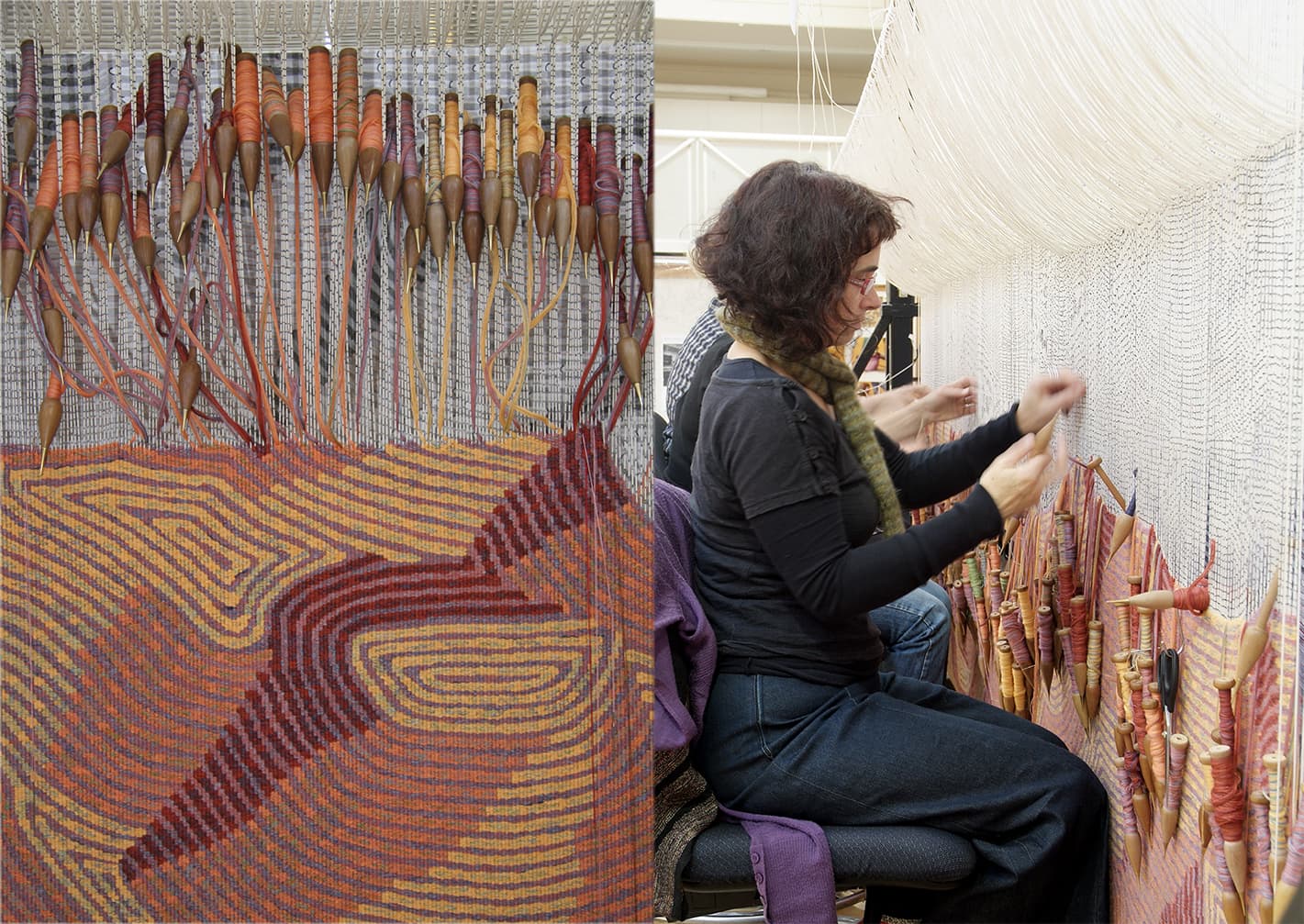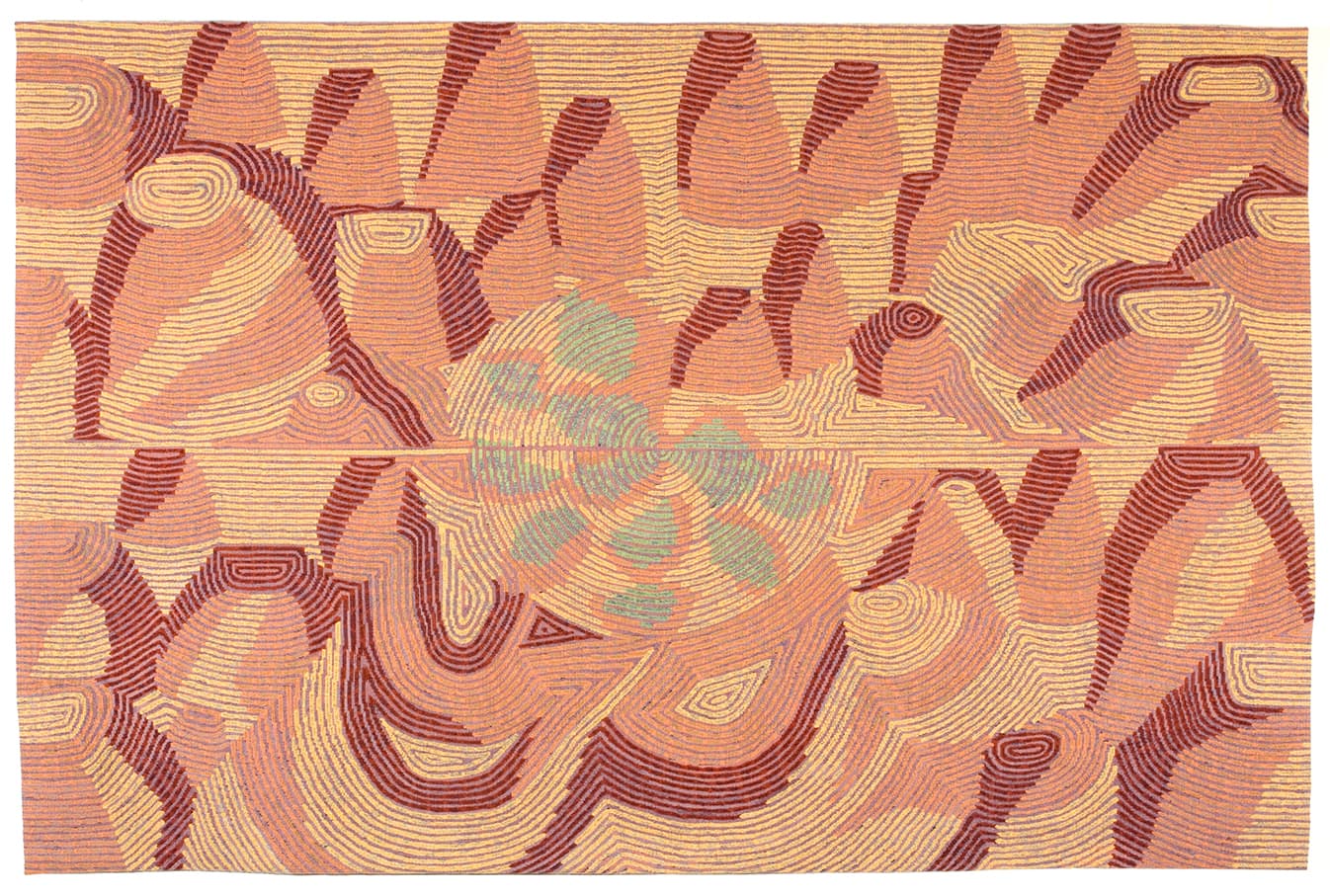



Having been raised within the Pupunya Tula art movement, it wasn’t until 1998 that Elizabeth Marks Nakamarra began painting in her own right. Nakamarra’s painting Creek bed was translated into tapestry by ATW weavers in 2009, as the fifth addition to the ATW’s Embassy Collection.
Growing up Nakamarra assisted her stepfather Turkey Tolson Tjupurrula and uncle Johnny Warangkula Tjupurrula, with their paintings, and continued to assist her late husband Mick Namarari Tjapaltjarri with his painting until his death in 1998. Nakamarra studied for three years at the Bachelor College in Alice Springs and served as a council member in Kintore for two years. After the death of her husband, Nakamarra began painting her father’s stories from the area of Kalipinypa, located approximately 400 km west of Alice Springs and north of Sandy Blight Junction.
Nakamarra’s paintings revolve around the subject of the Dream Time—the time before man walked the earth, when a huge storm caused lightning to flash and the water torrent formed the landscape creating rock holes, soaks and creeks. Her paintings depict this wellspring of life; the water sources, throughout the diverse terrain of the western desert, both heavenly and subterranean.
The ATW Embassy Collection consists of tapestries designed by Indigenous Australian artists, produced specifically to be loaned to Australian Embassies around the world. Creek bed is currently on loan to the Australian Embassy in Paris, designed by Harry Seidler and opened in 1978.
The original painting has a subdued understated palette that belies the complex painterly nature of the work. The weavers had to make many complex decisions regarding the amount of painterly information to include in the interpretation and the most economical ways to recreate Nakamarra’s limited but layered and complex colour scheme. When interpreting the artwork, the weavers found that the linear brush strokes required much thought, as they simultaneously describe the forms within the painting while also sitting forward or back to generate a sense of space and movement within the work. Each line is made up of distinct brush strokes, approximately 2 cm long, which have distinct borders around the edges and a slight translucency in the centre. Elizabeth’s lines have been painted onto a black background.
The weavers have simplified Nakamarra’s brush strokes in their interpretation, and have limited their palette to 3 or 4 tones in each bobbin for the four main colours in the tapestry- a close equal to the ‘real’ colour, a brighter tone and a colour to represent the background, with another tone or colour as needed. A blue instead of a black has been chosen to express the background and will run through all the bobbins as well as being used as a pure colour that will peep through the edges of some of the forms, acting as highlights—a detail the weavers have included from the painting. The weavers chose this colour as it blends more harmoniously with the other tones in their interpretation and works well when included in the schema of the four main colour mixes.
Creek bed was commissioned by the Tapestry Foundation of Australia, and funded by private donations.